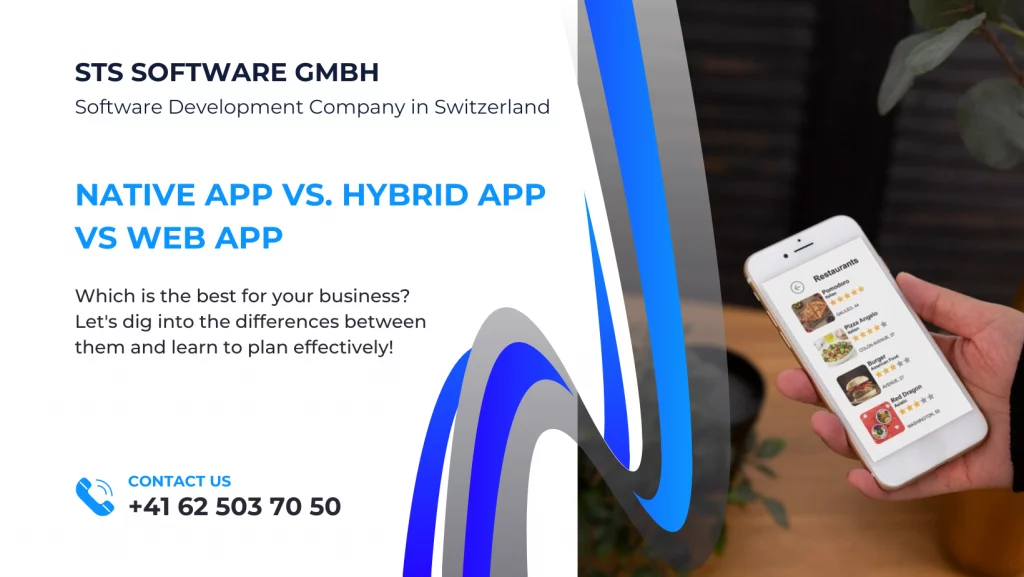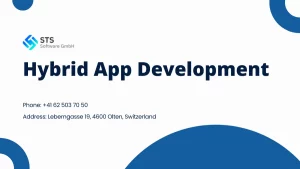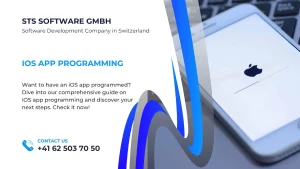What should you choose between a native app vs hybrid app vs web app? Each offers unique benefits and challenges. Without proper planning, you will fail at your app development project, ending up wasting your time and money.
In Switzerland, where the app market is expected to reach US$3,004 million in 2027, making the right choice for mobile app solutions more crucial. If you want to have an app developed, this article will serve as a guide to help you understand the different types of apps and make an informed decision. By learning user needs and exploring various app development options, you can create a new app tailored to the Swiss market. So, let’s read on!
What are Native Apps?
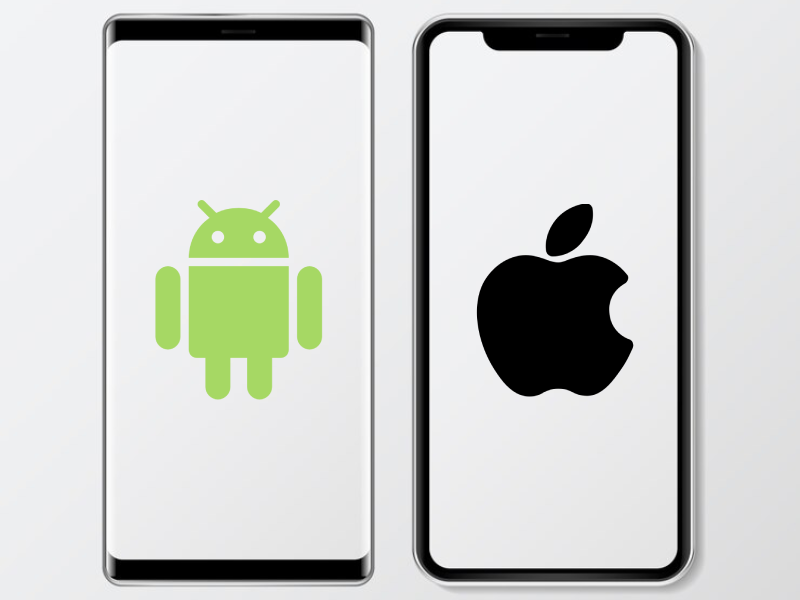
What is a native app? How long does it take to create a native app? Although this approach leads to higher costs and longer development time, it offers a superior user experience.
Understanding the Native Apps
Native apps are the apps that developers create only for a particular device or platform. Users can download them from app stores, such as the Apple App Store for iOS devices and the Google Play Store for Android devices.
A native app development process involves using platform-specific frameworks and programming languages. For example, developers use Objective-C or Swift to build iOS apps. Meanwhile, Android apps need Java or Kotlin.
The native app development process involves using platform-specific frameworks and programming languages. Here’s a breakdown by platform:
1. iOS App Programming
– Uses Xcode (latest version is Xcode 15), the official integrated development environment (IDE) from Apple.
– Programming languages include Objective-C or Swift.
2. Android App Programming
– Uses Android Studio (latest version is Android Studio Koala), the official integrated development environment (IDE) from Google.
– Programming languages include Java or Kotlin.
Learn more: Android App Programming: Here’s how it works
Development Time
Native programming takes more time than web apps because developers have to create and maintain two codebases for Android and iOS. If the app needs integration with device features like GPS or camera, the complexity of building a native application will increase, which extends the development time.
Development Cost
Native development is the most expensive option due to the separate development for iOS and Android apps. Moreover, hiring developers with expertise in specific programming languages can be costly. And if the app requires advanced features, the cost will rise further.
Advantages of Native Apps
Developing a native mobile app offers tons of benefits in terms of performance, access to features, and user experience.
Optimal Performance
According to the native app meaning, developers aim for a particular operating system. For example, an iOS app is designed to work on Apple devices. Optimized for the specific OS, the app will surely run smoothly and be responsive to the best possible speed.
Full Access to Features
Consider Pokemon Go as a native app example. It has direct access to all the features and functionalities of the device, such as GPS and camera. This full-access feature applies to all native apps.
User Experience
Many businesses program a native app to offer a smooth, native feel tailored for specific operating systems. Whether they develop a native iOS app or a native Android app, they can satisfy their target audience.
Disadvantages of Native Apps
The development time and cost are the most significant disadvantages of native apps. Developers also have to deal with app store approval and limited accessibility.
Slower Development and Higher Cost
To develop a native app, developers work with separate codebases for Android and iOS, which increases the development time and cost. Depending on the project requirements, expenses can be added.
App Store Approval Process
After development, you have to submit the app to the app store. This process involves an approval from the store. Furthermore, the app must meet the store’s strict guidelines and rules. The commission rate is another issue. Apple takes you at least a 30% rate for regular subscriptions on the App Store.
Limited Accessibility
Compared to web apps, native apps reach fewer audiences because users only download them from the right app store. Hence, if you develop a native Android app, iOS users cannot install it on their iOS devices.
What are Hybrid Apps?

Hybrid apps offer fast development times, cost efficiency, and cross-platform capabilities. However, they still have limitations.
Understanding the Hybrid Apps
Hybrid apps combine native and web apps. Hence, they have some native features within a web app container, allowing them to run on different platforms. Popular hybrid app frameworks include React Native, Flutter, Xamarin, and Phonegap/Apache Cordova.
Development Time
Hybrid apps can be built more quickly than native apps if their core functionalities are based on web technologies. However, some native functionalities may increase their complexity, extending the development time.
Development Cost
Hybrid mobile app development costs less than building native apps. Yet, the exact cost varies depending on the reliance on web technologies and the complexity of native features.
Advantages of Hybrid Apps
Many hybrid apps examples out there can demonstrate their noticeable benefits regarding cost saving and accessibility.
Faster Development and Lower Cost
Hybrid development involves using a single code for multiple platforms. Thus, it can speed up the development process. Using a single codebase also means fewer resources and lower development costs.
Wider Accessibility
Users can access hybrid apps from multiple platforms and devices without downloading them from app stores. This way, businesses can reach a broader user base.
Native Functionality
Hybrid apps have outstanding native functionalities through frameworks or plugins. It means they have enhanced capabilities.
Disadvantages of Hybrid Apps
Compared to native apps, hybrid apps have limited performance and user experience.
Performance
Hybrid apps depend on native browsers. Although they can update easily, some UI issues may cause glitches. Thus, the apps may not perform as well as native apps, especially when it comes to complex interactions with some device features.
Limited Native Features
Hybrid apps have native features, but they may not be fully accessible. They need custom development for advanced device features.
User Experience
The user experience in hybrid apps often feels less polished than fully native apps. For example, if you focus more on Android devices, their iOS side will be worse, and vice versa.
What are Cross-Platform Apps?

Cross-platform apps can work on multiple operating systems and platforms. Developers can even share their source codes.
Understanding the Cross-platform Apps
Cross-platform apps are built using an intermediate language that is not native to a device’s operating system. Instead, they are compiled into the target system with frameworks like Flutter, React Native, or Xamarin. Developers can share the code across different platforms, including Android and iOS.
Development Time
The use of a single codebase for multiple platforms reduces development time. However, some features require native plugins and modules, adding some time to the overall development process.
Development Cost
Multi-platform app development is generally more cost-effective than native development due to the shared codebase. Developers can also optimize resources if they already have skills in the chosen framework.
Advantages of Cross-Platform Apps
Cross-platform app development strikes a balance between native performance and usability, supports native plugin integration, and provides development efficiency.
Balanced Performance & Usability
App development across platforms means the app can run on multiple platforms and devices. Meanwhile, it can deliver performance close to native apps. In other words, cross-platform development balances native performance and usability across different devices.
Native Plugin Integration
App framework cross-platform integrates native plugins for some functionalities with a native look and full performance. Developers feel free to add native modules to their work.
Development Efficiency
One of the biggest advantages of cross-platform app development is the efficiency of code reusability. In this manner, developers write the core logic once and reuse it across multiple platforms. Ultimately, they can save time and cost.
Disadvantages of Cross-Platform Apps
Despite the impressive benefits, cross-platform apps challenge developers because of the following reasons:
Limited Native Features
Although cross-platform apps have native plugins, there may still be limitations in accessing advanced native features. This disadvantage restricts the app from fully possessing the capabilities of a particular operating system.
Reduced Performance
These apps don’t achieve the same level of performance as native apps. The unified technology stack is less flexible, leading to a loss of performance optimization. There may also be some differences between UX/UI designs on different operating systems.
Framework Dependence
The chosen framework for the development process plays a vital role. The app’s functionality and performance will be affected if the framework doesn’t support some features.
What are Web Apps?
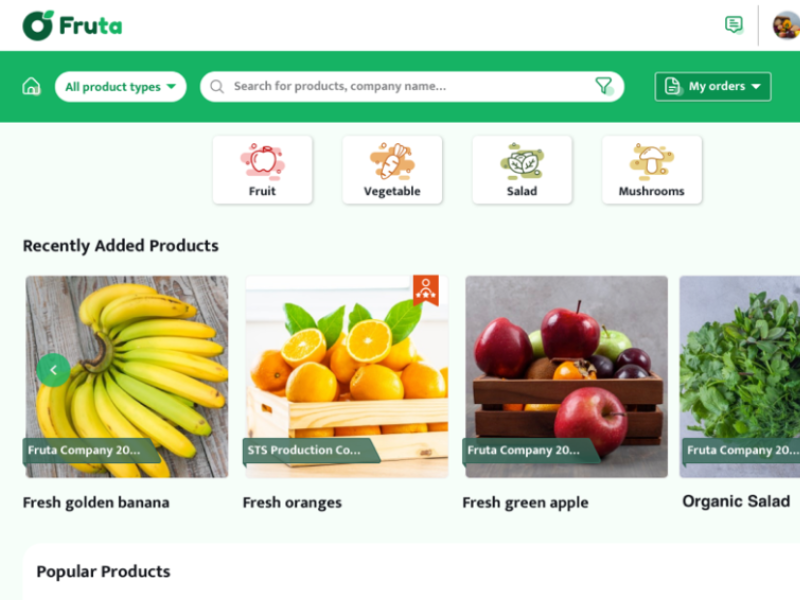
Web apps are stored on a server and run on the internet. Users can access the apps easily without having to install them on their devices.
Understanding the Web Apps
Web applications run within a web browser. Users can access them through a Uniform Resource Locator (URL). Web app development involves using various frontend and backend frameworks:
- Frontend: Vue.js, Angular.js, or React.js for building responsive user interfaces (client side).
- Backend: Node.js, ASP.NET Core, or Ruby on Rails for handling infrastructure and data (server side).
Development Time
To create your own web app, you just need to use a single codebase across platforms. Hence, when it comes to fast development time, this type of app ranks first. Other factors affecting the time are the frontend frameworks used and the complexity of features.
Development Cost
The single codebase also reduces the cost of programming web apps. Developers can use their existing web development expertise for the task. However, development costs may increase depending on the app’s features and backend development needs.
Advantages of Web Apps
Web apps are cost-effective and efficient solutions. Here are some benefits they provide:
Fast Development and Cost-Effective
The single codebase saves developers time and cost for programming web applications. Many developers have existing skills in using the JavaScript framework, which is also the most used web frameworks worldwide. Their expertise will further cut down on development expenses and training time.
Wide Accessibility
Developers create a web application and send the URL to users. Then, users can start using the app immediately. They can even access it on any device with a web browser. When comparing a web app vs native app, the first one wins in terms of convenience, as you don’t have to install it or wait for the store’s approval.
Easy Maintenance
Changes in a web app are made on the server side. Then, they will be updated across all platforms simultaneously. It means users always have the latest version without updating the app themselves.
Ready to build a powerful and user-friendly web application? Let our web experts handle the development. Learn more about our web application development services!
Disadvantages of Web Apps
To have a web app developed, you have to face multiple challenges, such as:
Limited Functionality
Users can access the web apps on any browser. Unfortunately, it also means the apps rely on an internet connection. Plus, they may lack advanced features like GPS or a camera.
Performance
Another issue when programming a web app is that it may work more slowly than native apps, especially with complicated functionalities. Native apps, in this manner, win because they are optimized for performance on a specific operating system.
User Experience
Even when developers try their best to develop a web app, the product may feel less polished and responsive than native apps. They must invest extra effort to ensure the app delivers a satisfactory experience.
What are Progressive Web Apps (PWAs)?

PWAs are getting increasingly popular due to their enhanced user experience. Twitter switched to PWA and then experienced a 65% increase in their pages per session and a 75% increase in Tweets. Hulu and Nikkei used the same method and succeeded, too.
Understanding the Progressive Web Apps (PWAs)
PWAs are web apps with app-like features like offline functionality and push notifications. Developers just need to publish the app online so that everyone can access it. Tools and libraries used for progressive web app development include PWA builder, Lighthouse, and Workbox.
Development Time
The time needed to create a progressive web app can be similar to traditional web apps because they all have existing web technologies and frameworks. However, you may require more time for PWA-specific features like offline functionality and service workers.
Development Cost
The cost for PWA development is the same as that for web apps. However, you need to pay more for PWA-specific features.
Advantages of Progressive Web Apps (PWAs)
PWA technology offers a brilliant mix of web and native app features. It also helps reduce development time and cost.
Combining Web and Native Features
PWAs have app-like features while looking like web apps. Hence, they bridge the gap between web apps and native apps. This combination allows users to install PWAs on their home screen easily.
Fast Development and Lower Cost
PWAs use existing web development skills and tools, leading to faster development and lower costs. Tools like Android Studio can also speed up the process.
Wide Accessibility
You don’t have to find the PWA in the App Store. Instead, the app is accessible through a web browser on any device. Installation is, therefore, unnecessary.
Disadvantages of Progressive Web Apps (PWAs)
Despite the trusted web authority, PWAs still have two big limitations:
Limited Native Functionality
PWAs can’t support all device features. The lack of device features may affect some of their functionalities and user experience.
Limited PWA Functionality
PWA functionalities are still under development. Hence, their capabilities may sometimes fail to keep up with the latest advancements in native app development.
Finding the Perfect Fit: Native Apps vs Hybrid Apps vs Web Apps
All three types of apps offer their own set of pros and cons. The best choice depends on your own requirements.
When to Choose a Native App?
Native apps are ideal for performance-critical applications that require extensive offline functionality. The apps also support deep integration with device features like GPS and camera.
For example, a native application like a fitness tracker requires constant data recording, even offline, while photo editing apps need access to the camera. These native app examples demonstrate the advantages of full device access and optimized performance.
When to Choose a Hybrid App?
Hybrid app development works best for faster development with some native functionalities, especially when core features can be developed with web technologies.
A hybrid app with to-do lists and note-taking tools is suitable for businesses looking to create simple productivity solutions. They can also use internal apps with certain needs for device features. As you can see from these two hybrid app examples, hybrid apps can efficiently meet needs without extensive resources.
When to Choose a Web App?
If you are looking for widely accessible apps, content-driven apps, or those working on web functionalities, you may want to develop a web app. Some web app examples include news websites, online stores, and social media platforms. They need constant updates to keep users informed.
You can even use a web app with PWAs for improved functionality. But when should you choose a PWA?
PWAs stand out when app discovery is your top concern. You don’t care about native app install and just want a blend of app-like features and accessibility.
You can learn about their benefits from the following progressive web app examples:
- Ride-hailing apps enable users to book rides and track their routes.
- Restaurant menus help users browse the menu and place orders.
- Loyalty programs allow users to access their points and rewards when subscribing to a service.
In such cases, by opting for PWAs, you can get the best of both worlds from native apps vs web apps. Ultimately, you will provide a seamless experience for your target audience.
Comparison Table: Native Apps vs Hybrid Apps vs Web Apps
There are many differences between native apps, hybrid apps, and web apps. The table below highlights their outstanding features, pros, cons, and ideal use cases to help you make an informed decision.
| Native Apps | Hybrid Apps |
Web Apps |
|
| Key Features | – Access to device features
– High performance – Native look and feel |
– Single codebase for multiple platforms
– Access to some native features |
– Accessible via a web browser
– Reliant on web technologies |
| Pros | – Optimal performance
– Full access to device features – Engaging user experience |
– Fast development and low cost
– Wide accessibility – Some native functionalities |
– Fast development and cost-effective
– Wide accessibility – Easy maintenance |
| Cons | – High development cost and time
– App store approval required – Limited accessibility |
– Poor performance for complex features
– Limited native features – Less polished user experience |
– Limited functionality
– Slow performance when handling complex features – Less responsive user experience |
| Ideal Use Cases | Performance-critical apps | Cross-platform apps with basic features | Content-driven apps and those relying on web functionalities |
STS Software GmbH – Helping You Choose the Right Path
STS Software GmbH is a leading app development company in Switzerland. Whether you need native apps, hybrid apps, cross-platform apps, or web apps (enhanced with PWAs), we are ready to deliver top-notch services to ensure your success.
With a strong presence in Switzerland and Germany, STS Software GmbH has extensive experience and expertise to help you choose the best solution for your needs. Our talented app developers are proficient in various programming languages, frameworks, and technologies. We know which works best for your business.
Ready to have an app developed? Partner with STS Software GmbH today and let our app development experts help you choose the right path for your project!
